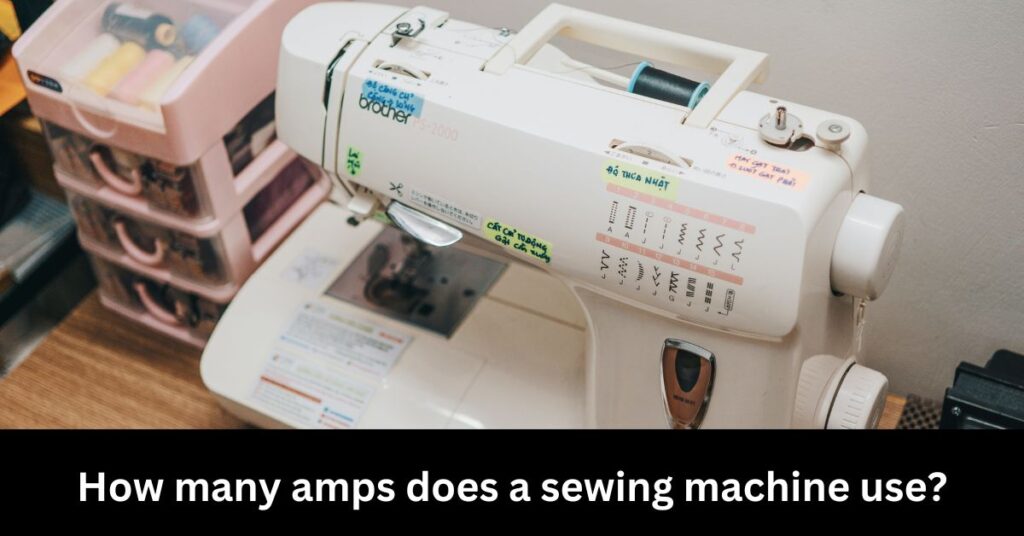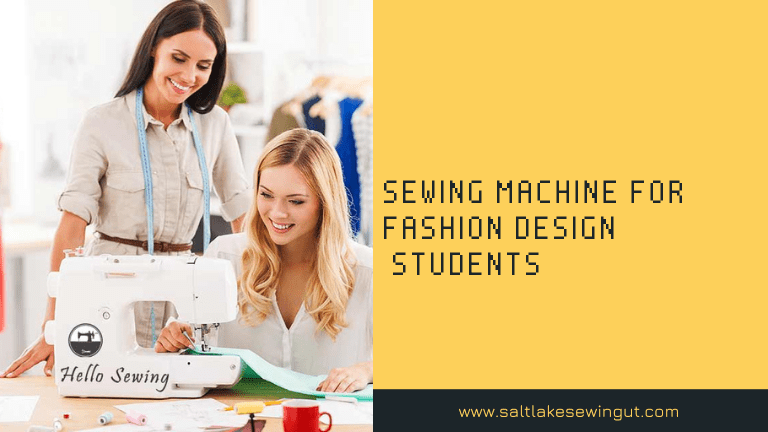Sewing machines are a staple tool for anyone interested in creating their own clothes or other fabric items. However, many sewing enthusiasts may not be aware of how much electricity their machines consume. It’s essential to know this information, as it can impact your electricity bill and even the environment. In this article, we’ll explore how many amps sewing machines use and why it matters. Let’s get started!

How Many Amps Does a Sewing Machine Use?
Sewing machines use between 1 and 4 amps, most falling in the 2-3 amp range. The actual amp usage depends on several factors, including the model and brand of the sewing machine and the specific features and functions being used. For example, a machine with a built-in motor will use more amps than one that relies on a foot pedal.
If you’re concerned about the power consumption of your sewing machine, it’s essential to look at its wattage. Watts = Volts * Ampere Kilowatt (kW) = 1,000 watts, so 100 Watts amounts to 0.1 kW. This means that a sewing machine with a wattage of 75-150 watts (depending on the model) won’t push the amps too much.
Do Sewing Machines Consume a Lot of Electricity?
If you’re concerned about your sewing machine’s impact on your electricity bill, don’t worry too much. According to our sources, a typical U.S. house uses about 908 kWh a month of electricity, and the cost of 1 kWh is 12 cents on average in the United States. This means that the electricity consumption of a sewing machine (even one with higher wattage) won’t make a significant impact on your bill.
it’s still important to be mindful of your sewing machine’s electricity consumption. If you use your machine frequently or for long periods, the electricity costs can add up over time. Additionally, being mindful of your energy consumption is an important step towards reducing your environmental impact.
How Many AMPS IS A SEWING MACHINE MOTOR?
The amperage of a sewing machine motor can vary depending on the specific model and type of motor. The amperage of a sewing machine motor can range from 0.5 to 3.5 amps.
HOW MANY WATTS DOES A BROTHER SEWING MACHINE USE?
The wattage of a Brother sewing machine can vary depending on the model and features of the machine. Generally, a basic mechanical sewing machine from Brother will use around 60-100 watts, while computerized models may use up to 150 watts.
CAN AN INVERTER POWER A SEWING MACHINE?
Yes, an inverter can power a sewing machine as long as the inverter is rated for the appropriate wattage required by the machine. Inverters convert DC power (such as from a car battery or a solar panel) into AC power, which is what most household appliances, including sewing machines, require.
CAN YOU RUN A SEWING MACHINE ON SOLAR POWER?
Yes, it is possible to run a sewing machine on solar power using a solar panel and a battery bank. A solar panel generates DC electricity, which can be stored in a battery bank and then converted into AC electricity using an inverter. This AC power can then be used to power a machine or any other household appliance.
Does a sewing machine take a lot of power?
Sewing machines generally do not require a lot of power to operate, especially compared to larger household appliances such as refrigerators or air conditioners. The power required by a sewing machine can vary depending on the specific model and features but typically ranges from around 60-150 watts.
What is the voltage of the stitching machine?
The voltage of a stitching machine can vary depending on the specific model and country of origin. In the United States, most sewing machines are designed to operate on the standard household voltage of 120 volts. However, in other countries such as Japan and some parts of Europe, the standard household voltage is 100 volts.
Is a sewing machine AC or DC?
Most sewing machines are designed to operate on AC (alternating current) power, which is the type of power that is supplied by standard household electrical outlets. AC power alternates in direction, which allows it to be transmitted over long distances more efficiently than DC (direct current) power.
However, some portable or handheld sewing machines may operate on DC power, which allows them to be powered by batteries or other DC power sources. In these cases, the machine may include an AC adapter or converter to allow it to be powered by AC power when necessary.
What is 1 type of sewing machine?
One type of sewing machine is a mechanical sewing machine. Mechanical sewing machines are operated using a foot pedal and hand-operated controls to adjust stitch length and width. They are powered by a motor and typically do not have any electronic or computerized features.
What size inverter do I need to run a sewing machine?
The size of the inverter required to run a sewing machine will depend on the wattage of the sewing machine and any additional accessories that may be used with it. To determine the appropriate size of the inverter, you’ll need to find out the wattage of your sewing machine by checking the manufacturer’s specifications or user manual.
FAQs
Can use a sewing machine with a built-in motor impact its electricity consumption?
Yes, a sewing machine with a built-in motor typically uses more amps than one that relies on a foot pedal.
Does using lights on a sewing machine impact its electricity consumption?
Yes, lights on a sewing machine impact its electricity consumption.

